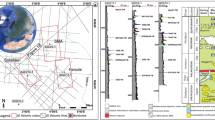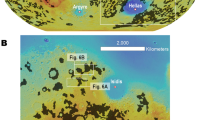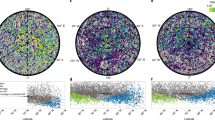Abstract
I HAVE read with a great amount of interest the letter by Dr. Johnston-Lavis which appeared in the issue of NATURE for February 5, as regards the ray systems of the moon from a vulcanologist's point of view. Even taking into consideration his explanations, however, I cannot now help comparing the moon with our own planet, especially when Laplace's nebular hypothesis, and subsequent theories in reference to the relation of the moon to the earth are considered, which seem to prove conclusively that the moon was once a portion of this world. Then with regard to his remarks about the lava flows from a crater, though I am by no means an authority upon this subject, such as Dr. Johnston-Lavis, I would beg to point out that the lava from the crater of Skaptar Jokul in the year 1783 formed two main streams which flowed for a distance of forty to fifty miles each, and varied in thickness or depth from 600 to 1000 ft. Now I cannot help thinking that such streams, only so much bigger, might have flowed from the craters of the moon, and it is well known that enormous floods have issued from volcanoes in the Sandwich Islands without much eruption of rocky, or pumaceous debris, which might hide the effect of the lava, as Dr. Johnston-Lavis suggests, though Prof. Pickering puts forward the suggestion that it is some material, such as pumice, which we see in the moon's rays. Apart from which geologists tell us that apparently in prehistoric times lava seems to have issued from vertical fissures, and deluged large areas, as is well seen in the great basalt plain of Snake River, Idaho, North America. Assuming that these fissures were caused by the contraction of the earth's outer crust when cooling, and again comparing the moon with the earth, we at least come to Nasmyth's well-known theory as regards these ray systems, though the manner in which these peculiar phenomena radiate from the craters still seems to suggest to me the same actions which took place from Skaptar Jokul, and in the Sandwich Islands. However, assuming Dr. Johnston-Lavis to be correct in his objections to this theory, I should like to know if he considers Nasmyth's theory any more likely to solve this interesting problem?
This is a preview of subscription content, access via your institution
Access options
Subscribe to this journal
Receive 51 print issues and online access
$199.00 per year
only $3.90 per issue
Buy this article
- Purchase on Springer Link
- Instant access to full article PDF
Prices may be subject to local taxes which are calculated during checkout
Similar content being viewed by others
Author information
Authors and Affiliations
Rights and permissions
About this article
Cite this article
PLANT, C. Origin of Structures on the Moon's Surface. Nature 92, 714–715 (1914). https://doi.org/10.1038/092714b0
Issue Date:
DOI: https://doi.org/10.1038/092714b0
Comments
By submitting a comment you agree to abide by our Terms and Community Guidelines. If you find something abusive or that does not comply with our terms or guidelines please flag it as inappropriate.



